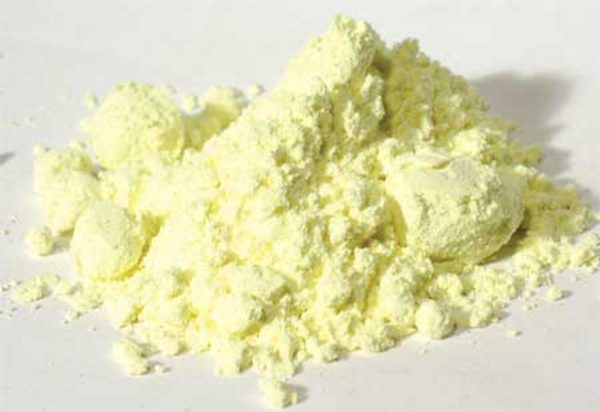1. What is the difference between sublimated sulfur and sulfur in medicine?
Usually, sulfur is vaporized into gas at high temperature, which is called sublimation. If the vaporized sulfur is taken away before burning, it cannot continue to burn below the ignition temperature (about 250℃). When cooled, it condenses into a solid, that is, the sulfur (S) content must not be less than 98.0%, which is called sublimated sulfur. Sublimated sulfur is also a drug name. After contact with skin and tissue secretions, it generates polysulfide compounds such as hydrogen sulfide and pentasulfonic acid, which have a bactericidal effect. Another name is sulfur flower.
2. Side effects of sublimated sulfur as medicine
Medical sulfur powder is different from industrial sulfur. Crude sulfur is used in industry, while sublimated sulfur is used in medicine. Block sulfur is a light yellow block crystal, and the powder is a light yellow powder with a special odor. It can be dissolved in carbon disulfide but not in water. The specific gravity, melting point, and solubility in carbon disulfide vary depending on the crystal. The boiling point is about 445°C. Sulfur burns in the air with a blue flame, generating sulfur dioxide. The powder is prone to combustion and even explosion when mixed with air or oxidants.
3. What is the difference between sublimated sulfur and sulfur for medicinal use?
Medical sulfur powder and sulfur granules are different. Crude sulfur is used in industry, while sublimated sulfur is used in medicine. Block sulfur is a light yellow block crystal, and the powder is a light yellow powder with a special odor. It can be dissolved in carbon disulfide but not in water. The specific gravity, melting point, and solubility in carbon disulfide vary depending on the crystal. The boiling point is about 445℃. Sulfur burns in the air, and a blue flame is produced when it burns, generating sulfur dioxide. The powder is easy to burn and even explode when mixed with air or oxidants.
Sulfur blocks have three crystal forms, namely orthorhombic sulfur, monoclinic sulfur, and amorphous sulfur. Among them, orthorhombic sulfur is the most stable, and general products are in two crystal forms.
4. What is the role of sublimated sulfur
Sublimated sulfur
Sulfur sublimates and is condensed to form a crystalline powder, which is light yellow and is used to make matches, and can also be used as a bleaching agent and disinfectant.
5. What is the difference between sulfur powder and sublimated sulfur?
Usually, sulfur is vaporized into gas at high temperature, which is called sublimation. If the vaporized sulfur is taken away before burning, it cannot continue to burn below the ignition temperature (about 250℃), and it will condense into a solid when cooled, that is, the sulfur (S) content must not be less than 98.0%, which is called sublimated sulfur.
6. Side effects of sublimated sulfur
Usually, sulfur is vaporized into gas at high temperature, which is called sublimation. If the vaporized sulfur is taken away before burning, it cannot continue to burn below the ignition temperature (about 250℃), and it will condense into a solid when cooled, that is, the sulfur (S) content must not be less than 98.0%, which is called sublimated sulfur. Sublimated sulfur is also the name of a drug. After contacting with skin and tissue secretions, it generates polysulfide compounds such as hydrogen sulfide and pentasulfonic acid, which have a bactericidal effect.
Sublimed sulfur is a product of sulfur refining. Simply put: sublimed sulfur is sulfur produced by sublimation.
Sulfur is divided into three types: sublimated sulfur, precipitated sulfur and refined sulfur due to different processing methods.
Sublimed sulfur: sulfur is formed by sublimation Refined sulfur: sublimated sulfur reacts with ammonia water to remove impurities Precipitated sulfur: refined sulfur reacts with calcined lime and decomposes with hydrochloric acid.
Among these three forms of sulfur, precipitated sulfur has the finest particles and is easy to make into delicate and easy-to-disperse finished products.

